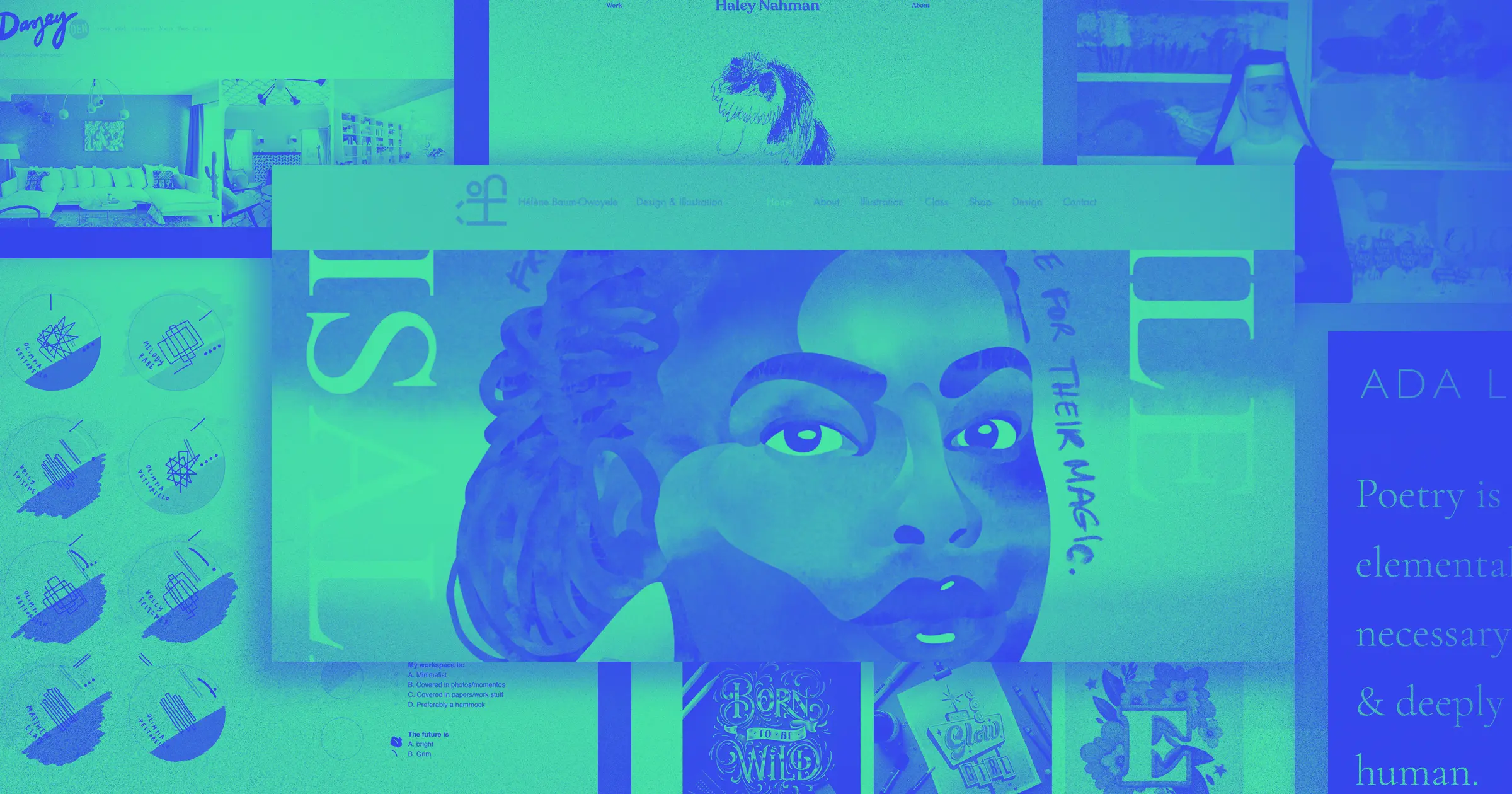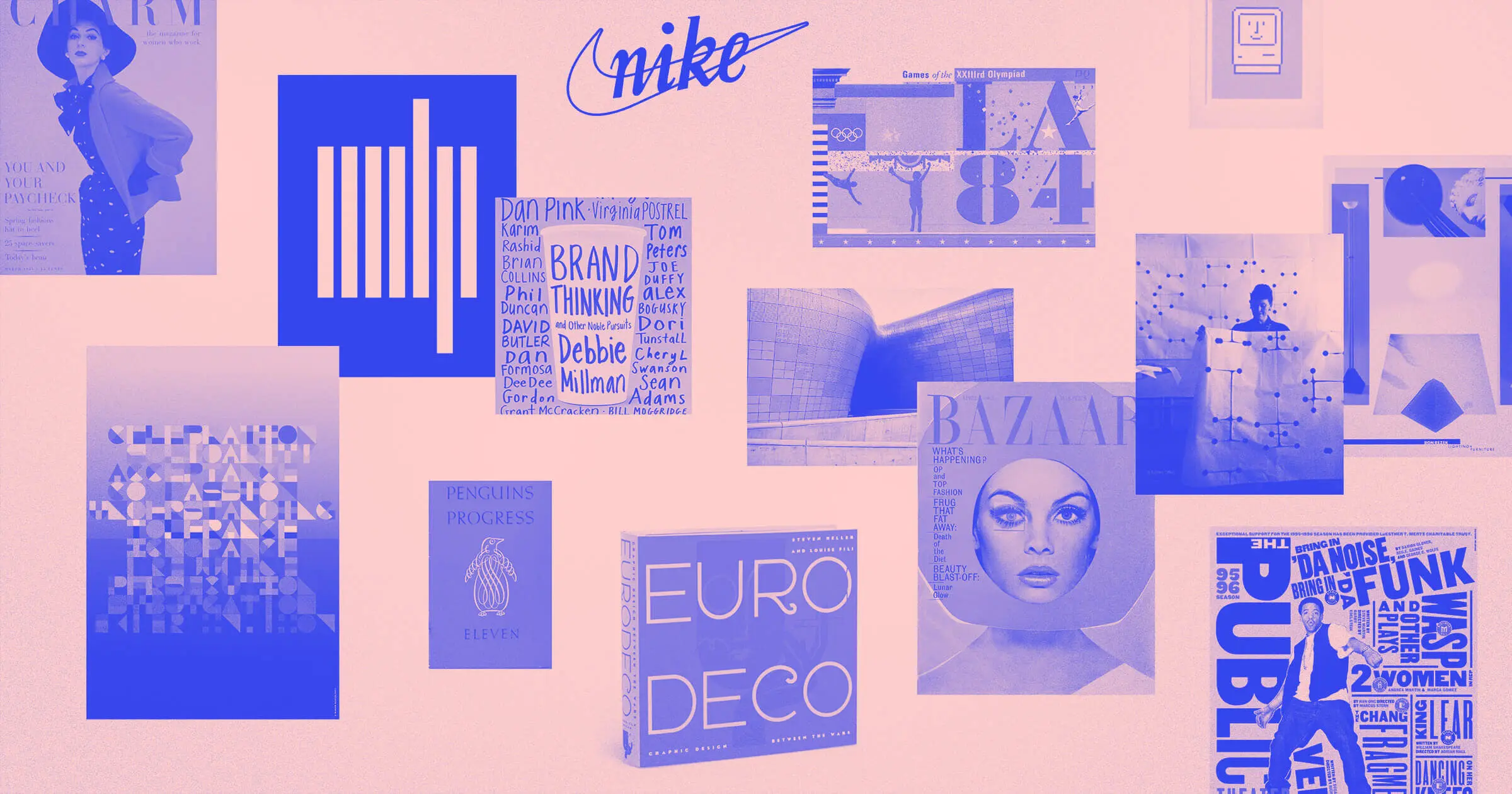Whether you’re looking for opinion pieces, tutorials, or design inspiration — we’ve got you covered with this collection of design articles from bright and creative minds.
With so many articles about design being published every day, it’s easy for standout articles to get lost in the mix. So, we curated a list that includes noteworthy articles about web, graphic, UI/UX, and accessible design.
Web design articles
1. Web layout best practices: 12 timeless UI patterns analyzed
Author Cameron Chapman explores 12 different UI patterns that outlasted the trendy period and became go-to standards in web design. For each pattern, Cameron shares a quick history, then explains why the pattern has endured the test of time. She also includes examples and highlights specific use cases for each pattern.
2. 22 inspiring web design trends for 2022
We’re a bit biased here but we’re still thankful for this comprehensive look at upcoming web design trends! This article covers a variety of design styles that will likely influence both the visual and functional design of websites in the coming year. This is a must-read for web designers who want to keep updated about popular design approaches.
3. The complete guide to cross-cultural design
In this comprehensive guide, author Jon Vieira explains the nuances of cross-cultural design as it applies to websites, products, apps, and more. Jon points out that cultural considerations are about so much more than language. He discusses seven different dimensions of cross-cultural design, ranging from differences in social norms to the availability of high-speed internet connections in the target area. The web is inherently cross-cultural, so this guide is a helpful read for web designers in all industries.
4. Font pairing: How to find the right combinations for your web designs
Typography is a crucial aspect of any web design. But with all the font options out there, choosing combinations that are both visually appealing and functional. In this article, author Jeff Cardello shares tips for choosing the fonts that work with your web design. Plus, he includes several suggested pairings.
Graphic design articles
5. Break the Internet: The Rising Popularity of Glitch Art
Author Ben Barnhart breaks down the defining characteristics of glitch art, sharing examples of elements like pixelation, light leaks, and color degradation. Ben also shares a brief history of this art style along with influential artists. We love that this article takes you through the visual evolution of glitch art and deep dives into how it's used online today.
6. NFT art: what is it, how it works, and what it means for the creative industry
If you muted “NFT” on Twitter because you thought it was some cryptocurrency thing that didn’t apply to you — you might want to reconsider. This article by Elena Fitzsimons provides a simple explanation of NFTs, specifically focusing on NFT art. Elena explains how to create and sell NFT art while also exploring the potential future of this art form as a revenue stream. If you produce digital art of any kind, this piece is worth a read.
7. The power of using symbolism in design
Author Johnny Levanier starts with the basics of symbolism and the role it plays in graphic design. Then, he dives into the meanings behind a variety of symbol types — nature, zodiac, lunar, celestial, animal, and more. For each category, Johnny shares a bit of history and then explains how designers can effectively use the symbols in their work.
8. 10 ways to stop your designs from looking the same and create unique stuff quickly
Keeping your designs fresh can get tricky when you get into a routine. And it only gets harder if you’re short on time. Author Mary Stribley shares tips for varying your designs so you can create unique looks without draining all your time and brain power. We especially like how Mary shares shortcuts for repurposing elements of one design to create something that looks entirely new.



















Need creative inspiration, like, every week?
Join more than 800,000 people getting the best, coolest, and latest in design and no-code each week.
Accessible design articles
9. Accessible Palette: stop using HSL for color systems
Designer and frontend developer Eugene Fedorenko shares the lessons he learned after reconstructing a color system. Eugene explains that using HSL led to inconsistencies in perceived lightness and unpredictable contrast ratios — making it difficult to meet Web Content Accessibility Guidelines (WCAG). Eugene provides a solid explanation of the limitations and then shares an accessible palette building app to help you build your own color systems.
10. How to build for those who prefer motion and those who don’t
Webflow brand designer Corey Moen discusses both the benefits and potential harm that comes from incorporating motion into your design. Corey shares his own experience trying to strike a balance. Then, he provides a step-by-step tutorial for building in a way that includes motion for some users and turns it off for others, depending on their browser preferences.
11. How to bake layers of accessibility testing into your process
Accessibility experts Kate Kalcevich and Mike Gifford explain the concept of “layered accessibility testing” — a practice that helps you catch accessibility issues earlier in the design process. Not only do Kate and Mike share tools and techniques, but they also include tips for getting stakeholder buy-in for accessibility.
UI/UX design
12. The design process is a lie
In this article, author and product designer José Torre lays out his argument that the design process is a lie — with illustrator halfool_draws driving the point home with illustrations throughout. Jose’s piece is a collection of lessons learned from years of product design work. Jose’s relatable musings are perfect for any designers who are frustrated with the process or feeling a little lost.
13. Design edge cases and where to find them
Working through design edge cases is important — but how do you find something that, by definition, is outside the norm? In this article, inventor, author, and developer Tanner Christensen shares his tips. Tanner explains how to think about design from various angles so you can anticipate and address edge cases earlier in the process.
14. The psychology of design: 15 principles every UI/UX designer should know
So much of design — from the design itself to how it’s perceived — is psychological. In this article, author and UX/UI professional Maximiliano Cabrera dives into various psychological principles designers should keep in mind as they create. Maximiano briefly covers 15 different principles and includes quick design tips for addressing each one. So no matter what type of design you’re working on — this article has something for you.
15. The Golden Ratio and User-Interface Design
While the Golden Ratio is generally applied to art and architectural design, author Kelley Gordon argues that it can also be used to create aesthetically pleasing user interfaces. Through various examples, Kelley demonstrates how the Golden Ratio influences text sizes, image cropping, and web page layouts.
General design articles
16. Keeping creativity flowing
Illustrator and author Alek Mackie starts off by acknowledging that the past year or so hasn’t been easy — and many people’s creativity has suffered as a result. Alek gives tips for invoking creativity in yourself and amongst teams. He even shares examples of playfulness — like trolling coworkers with images of The Rock and adding a dummy cursor to a Figma design to confuse teammates. Sparking and fueling creativity is tough. This article is a great read for anyone who needs a bit of a boost.
17. Receiving Criticism
This illustrated piece by designer Pablo Stanley is technically from 2020 — but it’s worth revisiting in 2021 and beyond. Pablo uses a series of drawings to convey the range of emotions he goes through after receiving critical feedback from a client. If you struggle with criticism, you’ll find comfort in this relatable comic.
18. What is the Unity Principle of Design?
UX designer and author Dan Silveira touches on all seven principles of design, but focuses on the importance and power of bringing them all together. Dan explains that when you get tunnel vision about a single principle, you risk throwing off the harmony of the design. He ties each principle back to the user experience and shares best practices for achieving a unified experience.
19. Diversity in design: Inclusion alone won’t fix a broken system
Social impact designer and visual storyteller Ida Persson points out weaknesses in the quest for diversity in design. She highlights the issues with expecting designers of color to fit into a system that was designed without them in mind. Ida argues that to truly embrace diversity and inclusion in design, we must rethink what good design is in the first place.
20. The lasting influence of ’80s video game design
This article by Colette Pomerleau is part history, part inspiration. Colette starts by exploring big names in 80s video game design and how the graphics were made. Then, she gets into what she calls the retro ripple effect — the nostalgia-driven tendency to use design characteristics from decades past. Colette shares a wide range of recent examples that were clearly inspired by the classic 80s video game design aesthetic.
What design articles are you thankful for?
Design is an art form that calls for constant creativity and inspiration. What articles have motivated you to experiment with your designs?































